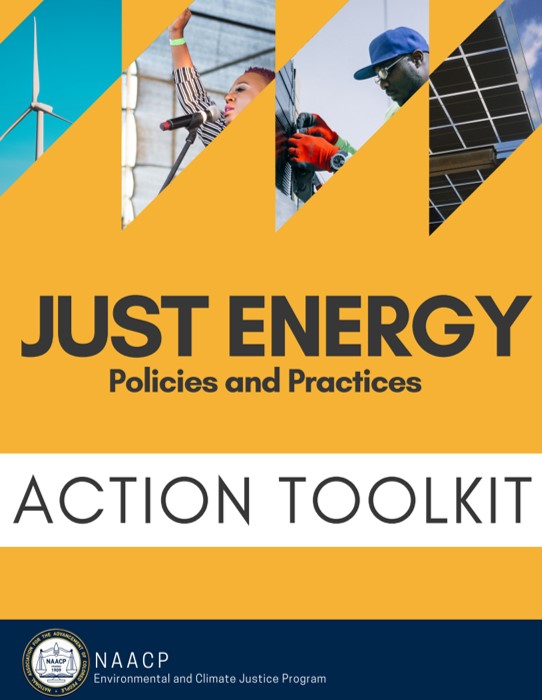The Just Energy Policies and Practices Action Toolkit includes 8 modules of practical, user-friendly guidance on how to phase out toxic energy like coal, nuclear, and oil facilities and bring in clean energy like wind and solar.
Module 1: Getting Organized So You Can Organize: Create an Environmental and Climate Justice (ECJ) Committee or workgroup, set organized so that you can decide what your energy justice needs are. In this module, we guide you through all the steps and many more.
Module 2: Legislative Campaigns for Energy Justice: If your Environmental and Climate Justice (ECJ) Committee is ready to pass policies and enact legislation, this module is for you. We break down multiple types of policies your ECJ Committee or team can work on passing as well as how to educate and influence your local lawmakers. This module coincides with our Just Energy Policies: Model Energy Policies Guide, which goes into depth about each of the pieces of legislation we discuss.
Module 3: Engaging Your Utility Companies and Regulators: This module begins the specific energy justice campaigns your unit might want to achieve, depending on your communities’ needs. In it, you will learn how to educate your utility companies on equity through holding meetings, attending utility company meetings, distributing materials, etc.
Module 4: Starting Community-Owned Clean Energy Projects: If your ECJ Committee or team decides to work on owning your own solar gardens or wind farms or a number of other community-owned clean energy projects, this module will discuss ways you can accomplish that. We also provide helpful links, definitions, and paperwork examples for you to use.
Module 5: Starting an Energy Cooperative: There are many advantages of starting your own energy cooperative, including financial benefits. This module discusses how your Environmental and Climate Justice (ECJ) unit can conduct feasibility studies and develop business plans to get your cooperative up and running.
Module 6: Starting a Community Energy Efficiency, Retrofitting, and Weatherization Project: Perhaps your Environmental and Climate Justice (ECJ) Committee is more interested in engaging your neighborhoods in energy efficiency projects like fixing leaky windows, replacing outdated heating and cooling units, etc. If this is the case, this module outlines how to educate your community members and organize sub-contractors and businesses to help you get your project off the ground.
Module 7: Educating and Organizing for Energy Justice: There are so many ways your ECJ Committee or team can organize and educate for energy justice: social media campaigns, letter or post card writing, hosting press conferences, town halls and roundtables, and/or hosting a Bridging the Gap Summits, to name a few! This module will explain the steps of each. We will guide you through how to get organized and how to choose which campaign or project is right for you.
Module 8: Direct Action Campaigning for Energy Justice: This module is specifically written for NAACP units and ECJ Committees who are organizing sit-ins, protests, rallies, walks or marches, or other kinds of NAACPapproved direct actions. In this module we will go through the benefits of each as well as the process of getting your direct action campaigns approved by national NAACP departments.
